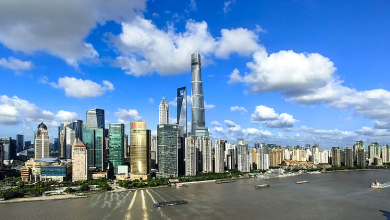North China's city cluster forms low-altitude economy alliance


<img src='https://news.cgtn.com/news/2024-08-18/North-China-s-city-cluster-forms-low-altitude-economy-alliance-1wa0bpyqdO0/img/fdf09aeb27c24544b58d6f7e607c4fd5/fdf09aeb27c24544b58d6f7e607c4fd5.png' alt='Passengers ride on an eVTOL aircraft in Wenzhou City, east China's Zhejiang Province, July 16, 2024. /CFP'
The Beijing-Tianjin-Hebei city cluster, north China’s economic circle, established the low-altitude economy industry alliance on Saturday in Tianjin Municipality, with 33 projects officially signed off.
The projects include the construction of a low-temperature battery production line and supporting facilities, and the overall planning of a low-altitude public route in a science park, among others.
Guests from Beijing, Tianjin and Hebei Province attended the ceremony and watched a drone show demonstrating low-altitude application scenarios in the air.
Guo Kangwei, head of Baodi District in Tianjin, said the low-altitude economy is a typical representative of new quality productive forces, a new engine of economic growth, and a new track of industrial development.
Baodi is vigorously promoting the deep integration of scientific and technological innovation and industrial innovation, and accelerating the cultivation of low-altitude economy-related industrial clusters, Guo said.
The “low-altitude economy” largely refers to economic activities conducted in low-altitude airspace, typically below 1,000 meters, including flight operations, passenger transport and cargo delivery.
In a 2024 report, the Chinese government identified the low-altitude economy as a new growth engine for the first time, with vertical mobility seen as a “new productive force” in areas such as passenger and cargo transport.
In 2023, the scale of the “low-altitude economy” sector increased to 506 billion yuan ($70 billion). China’s aviation regulator foresees a 2-trillion-yuan industry by 2030, a fourfold expansion from 2023.
(With input from Xinhua)





